Last Updated on 24/01/2023
A 19th-century German writer called Wernigerode the colorful town on the Harz Mountains. And it really is. The old town has been renovated and it is very pleasant to walk around here. In my opinion, Wernigerode is the nicest town in the Harz Mountains.
Harz. 5. Thale, children program
Harz. 4. Quedlinburg
Luneburg Heath
Harz. 3. Goslar
Harz. West. Map of attractions
Harz. 2. Brocken, Wurmberg
Harz. Centre and East. Map of attractions
For those for whom even this will not be enough, there are very interesting places in more or less distant surroundings. For example, Zoo Hannover or Volkswagen City in Wolfsburg.
The transport system in the region is relatively developed, but at the same time very slow. Therefore, it is better for “horseless” tourists to change a couple of places for accomodation. Tourists with a car can choose.
Goslar (part 3) will be closer to the autobahn and convenient for side trips, but a little too far from central part of Harz. Wernigerode (part 1) is more touristy and central for Harz. Quedlinburg (part 4) claims great romance and silence.
History
The settlement arose at the end of the 9th century. The name ending in -rode means that it was necessary to uproot the forest. There are many similar names in the region. The first part of the word is supposedly associated with a proper name – probably the name of the leader of the settlers.
The castle was built around 1120.
At the beginning of the 13th century, the settlement received city rights. In the 13-16 centuries the city experienced various ups and downs. It expanded and burned – especially strongly in 1528, when 4/5 of the old buildings were destroyed. The owners of the castle changed. A wave of plague passed.
The 30-year war did not have a devastating effect on the city. At the beginning of the 18th century it, like the county, part of which he was, joined Prussia.
In the 19th century the city was going through good times, railways were built. During World War II, there were camps and hospitals in Wernigerode. At the end of the war, it was bombed.

Wernigerode map

Wernigerode what to see
Wernigerode old town route
The old town is within walking distance from the station. Despite the big fires, the city was included in the route “The German half-timbered road”, although it did not reach UNESCO. But still, there is enough antiquity here, and newer houses are built “in style” and you still need to be able to distinguish them from new ones.
The old town is almost completely renovated and it is very pleasant to walk around it.
Now let’s walk along the streets of the colorful city of Harz. This is how German writers of the 19th century called it. Let’s start our walk from the station.
1 – Krellsche Schmiede (1678 г.)
The oldest functioning blacksmith in Germany. Only at the end of the 20th century it didn’t work as intended. Now it is a workshop – a private museum, in which a fifth generation blacksmith works as the chief master. Various metal ornaments are produced at the forge. Visitors can watch and participate.
2 – Schäfergasse
One of the well-preserved streets with houses from the 16th century (number 10, 12, 13, 22).
3 – number 80. Originally the town hall of the Lower City, it was damaged in a fire in the 16th century and was rebuilt (1529), served until the end of the 20th century as a hotel with a not very good reputation.
4 – Krummelsche Haus, number 72
A House with figures, built at the end of the 17th century in the late baroque style. The reliefs (counting from the top left) mean Europe (1), Asia (2), Africa (8) and America (10), Wernigerode (6, first in the second row), 9 – memento mori (remember death). The lower floor was rebuilt in the 19th century.

5 – look at houses 3 and 5 on Johannisstrasse and go to
6 – the church of St. John (Johanniskirche)
The church was built at the end of the 13th century in the Romanesque style.
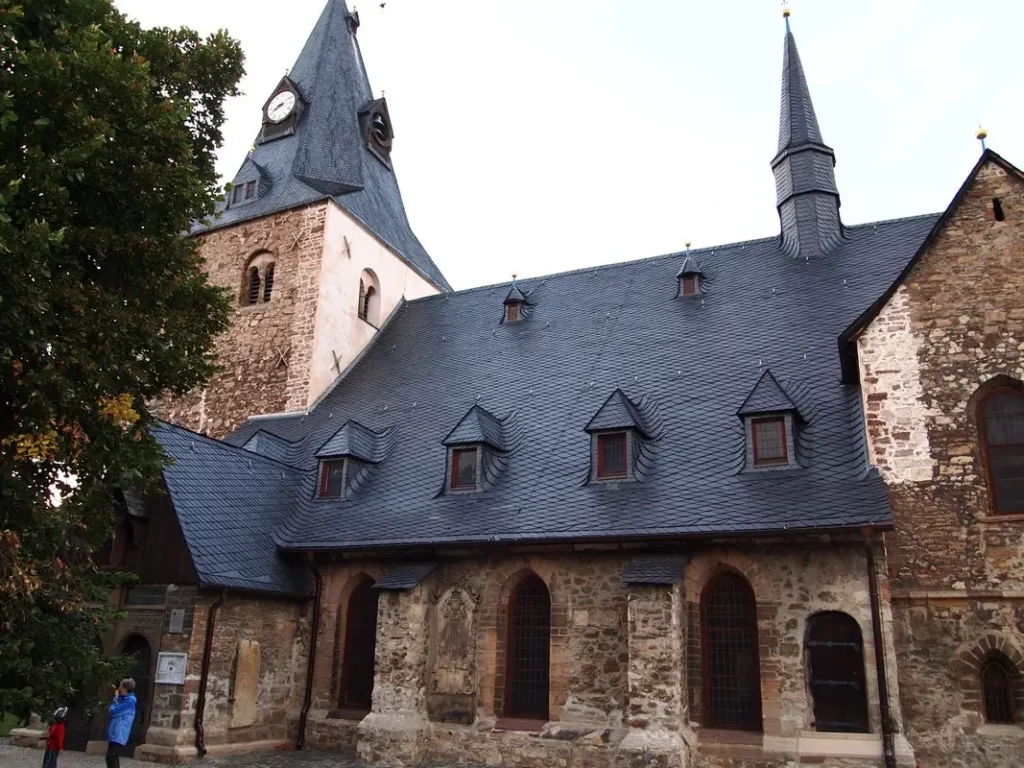

7 – Hintergasse street has several interesting houses, including the 16th century (for example, number 32), 17th century, and the oldest house in the city (number 48, 1400-1410).

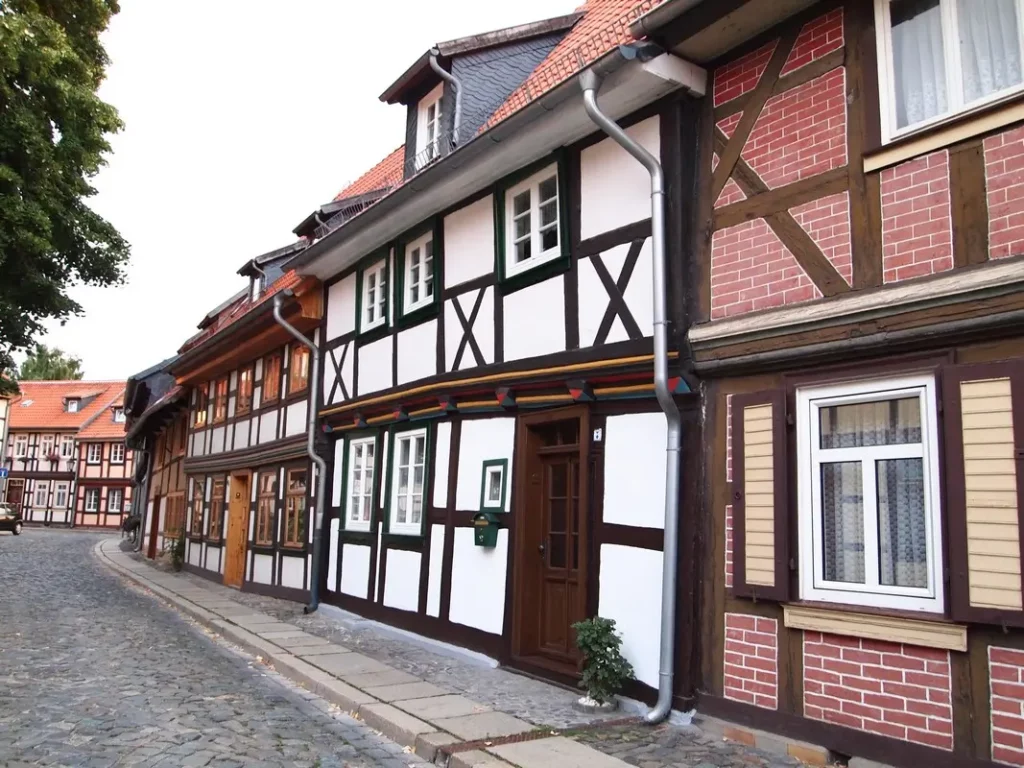


7а – West gate (Westerntorturm)
The gate with a tower was built in the 13th century and served as a fire observation tower, and later as a prison for those residents who committed minor offenses.

8 – Marktplatz
The most significant building on the square is the very beautiful town hall. It is a one-of-a-kind town hall built in the Lower Saxon half-timbered style (early Renaissance). The first town hall was built here in the 12th century and was called the Play House (Spelhus), played the role of theater and court.
In the 15th century there was also a court, and the locals gathered for dancing and carnival celebrations. In the middle of the 15th century – 16th century the building was rebuilt: a lower basement floor and a large meeting room were built. After the fire in 1528, during which the old town hall completely burned down, the city authorities moved to Spelhus.

On the town hall there is an inscription “Einer acht’s, / der andre betrachts / der dritte verlacht’s / was macht’s”. That I would translate “One respects, / The other is watching, / The third makes fun, / What is being done.” The building to the right of the town hall – the hotel “Gothic House” – was built in 1481.
Breite Strasse starts from the Market Square. But we will not go along it, we will only look at the cafe “Wien”, number 4, – an elegant small building of the 16th century.

And we will go to 9 – Sylvestrikirche and Oberpfarrkirchhof street around it. This is the oldest part of the city. The church was built on the site of the old one in the 13th century, but was heavily rebuilt later. Many buildings around it have survived from the 16th century. (Oberpfarrkirchhof 5, 8, 9, 10, 11, 13). There is also the Harz Museum. Exhibits shows history of the region, half-timbered houses, the nature of the region, paintings by local artists.
On the street Klintgasse the most famous number 5 (10) – Crooked House (Schiefes Haus). The house was built by a draper at the end of the 17th century as a mill in place of the old one. There was a wheel on the wall where the house leaned, and the water ran along a dug-out ditch. Actually, due to the weight of the water and the wheel, it tilted. Later the house became residential. Most recently, the city has adapted it for temporary exhibitions..

We set off along Marktstrasse street to the next point – 11, the smallest house (Kleinstes Haus, 18th century). On the way, you can look into house number 1 on Marktstrasse – Kunsthandwerkerhof (art craft yard), see how glass is painted, porcelain is made, and knitted.
The small house has no special architectural value and is interesting only for its size. In width – 2.95 m, in height 4.20 m, door in height – 1.70 m. In the 20s of the 20th century here the local conductor managed to live with his wife and numerous children. You can appreciate their feat by visiting this small museum.
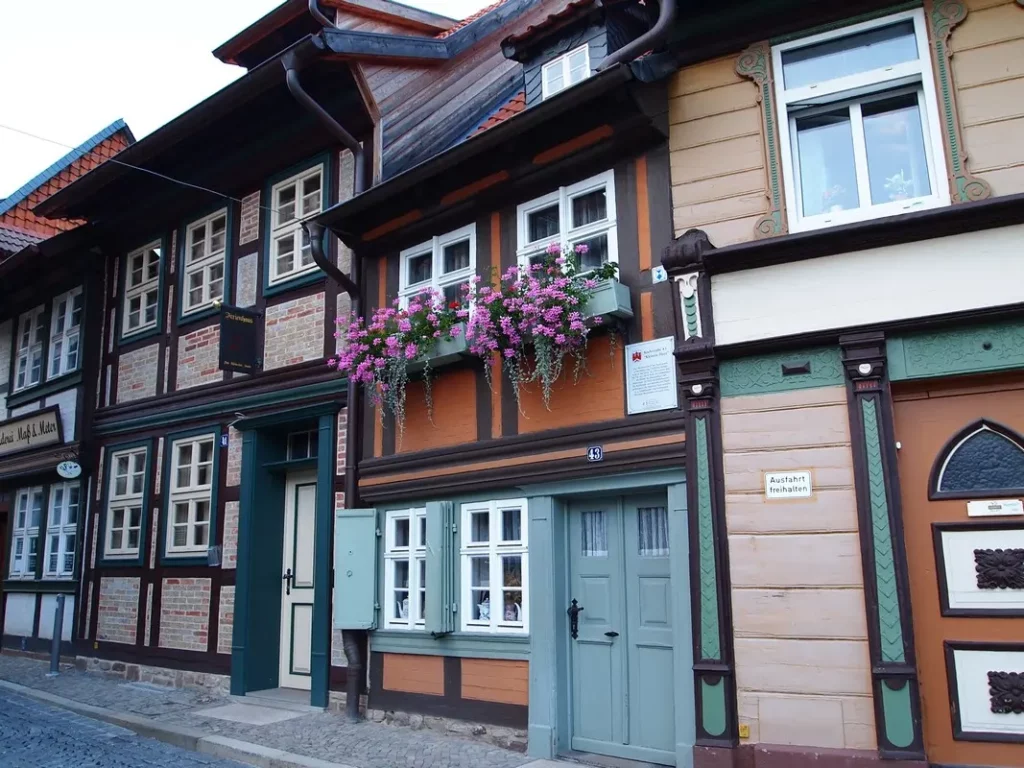
12 – church Liebfrauenkirche
The church was built in the 13th century, but completely burned down in the 18th century. Therefore, we are interested primarily in the opportunity to climb the tower (April – October 10.30-12.30, 14.00-16.00, Sun 14.00-16.00).

Finally, 13 – the remains of the city wall with a pair of towers.
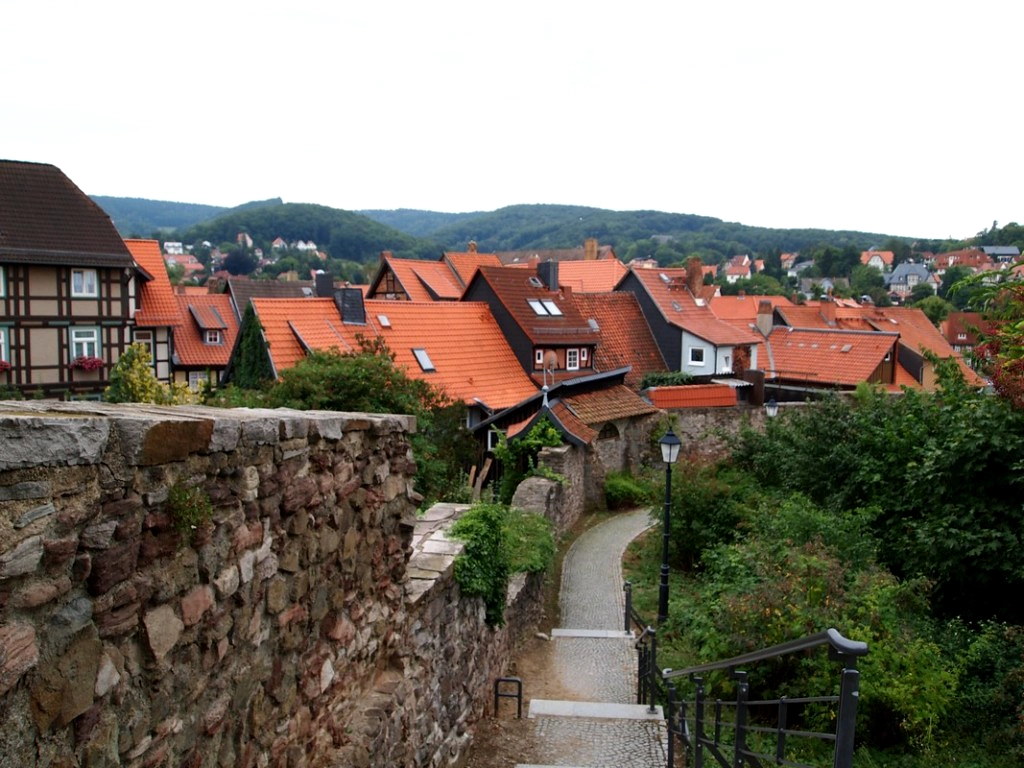
So, we went around the whole center. From here we can go up to the castle or return to the center, and go to the castle on a wheeled train.
There are two of them in the city: a yellow Bimmelbahn (departs from the town hall) and a red Schlossbahn. Schlossbahn has circular route: it departs from a large parking lot near the station, then goes to the castle, and on the way back stops at the market and near the House with figures on Breitestrasse. Personally, the ride on the red version did not delight me at all. I was firmly convinced that the trailers were converted from ordinary drays.
Castle (Schloss Wernigerode)
The castle was built in the Middle Ages (early 12th century) as a hunting castle. Later, it was repeatedly rebuilt by the Counts of Stolberg-Wernigerode, especially after the 30-year war and in the 19th century in the “historical” style (common name for the neo-Gothic and neo-Romanesque styles).
Otto zu Stolberg-Wernigerode, who rebuilt the castle in the 19th century, was a politician and vice-chancellor under Bismarck. A separate room was made for Bismarck in the castle.
At the beginning of the 20th century the castle was the permanent home of the Stolberg-Wernigerode princes and was partially opened to the public, and in 1929 the family left the castle.


The interiors date back to the time of the last restructuring. Nevertheless, they are interesting enough. You can inspect the rooms without excursion. But follow the signs carefully to inspect all the rooms in the first route (after the second, the stairs lead down to the exit).
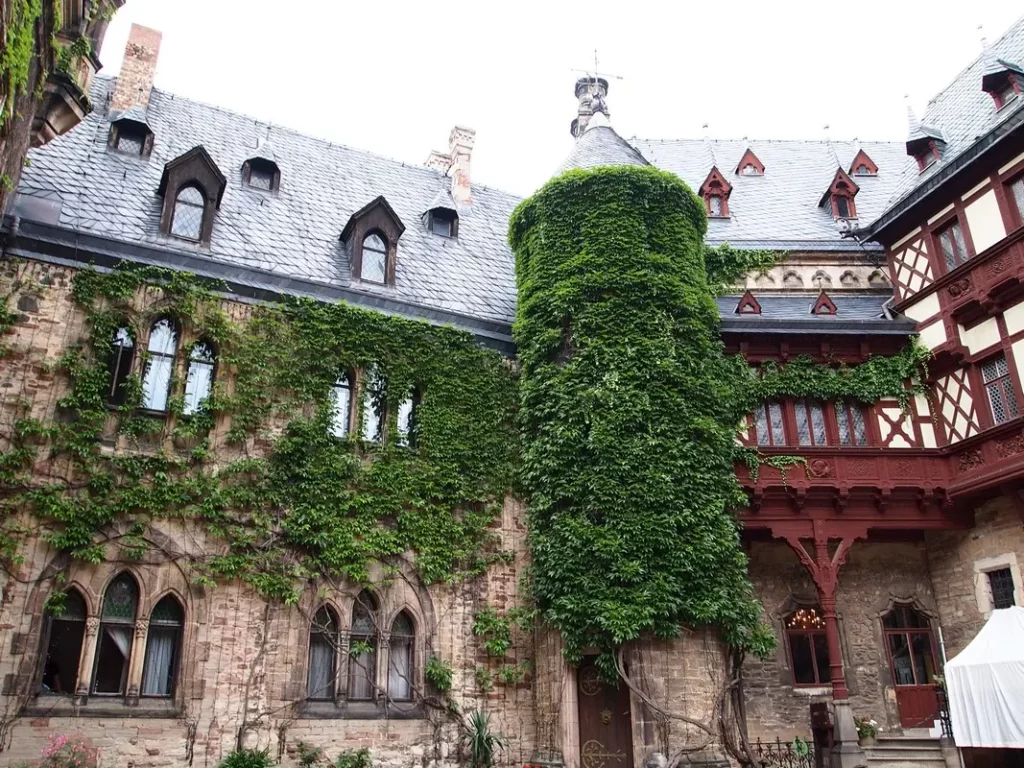



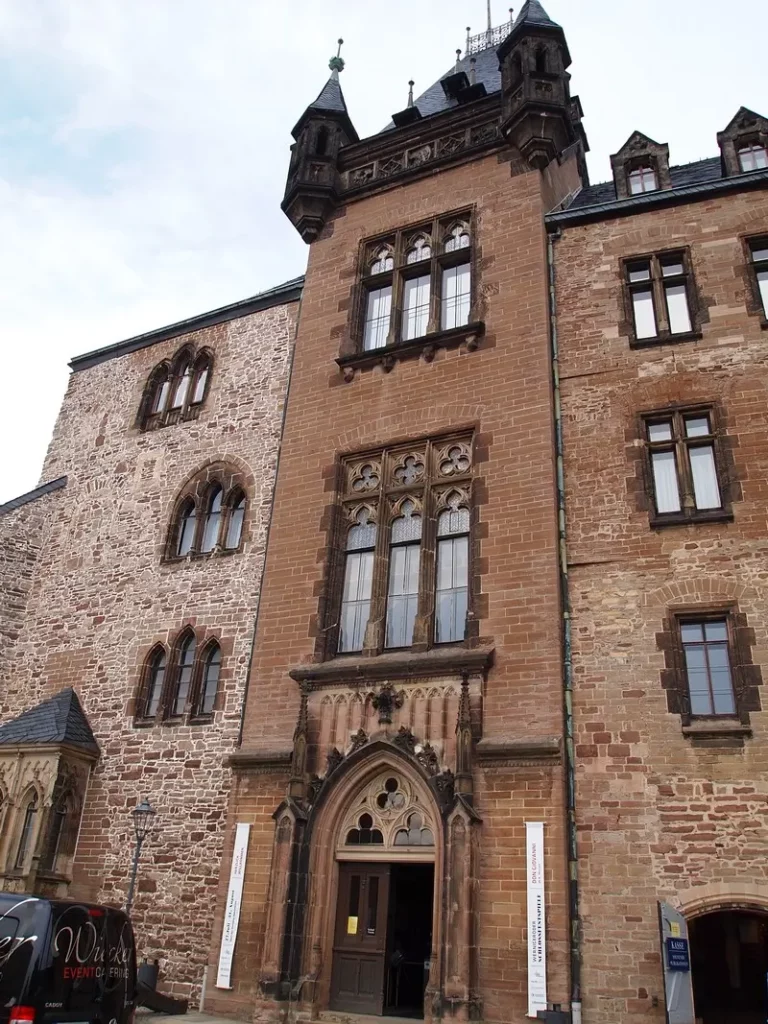



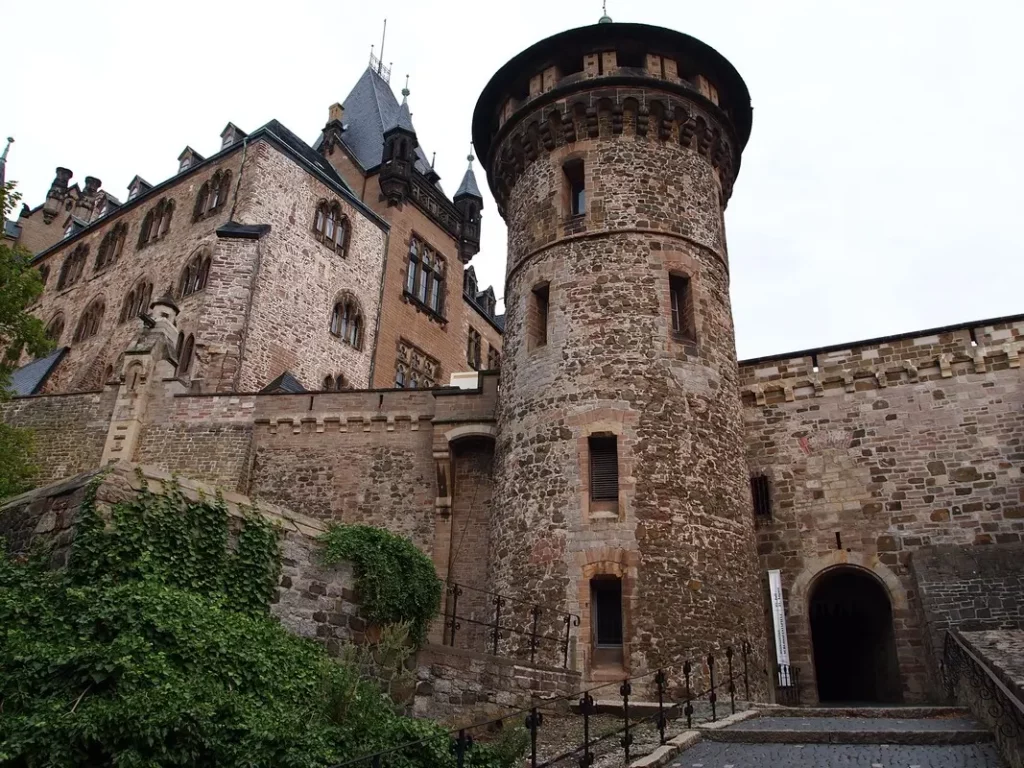
Next: Wernigerode – other seesightings and Rüberland caves
Other posts about Harz – #Harz. Map of attractions – part 1, part 2.
Do you enjoy the site without cookies? This means that I work for you at my own expense.
Perhaps you would like to support my work here.
Or change your cookie settings here. I don’t use personalized ads







